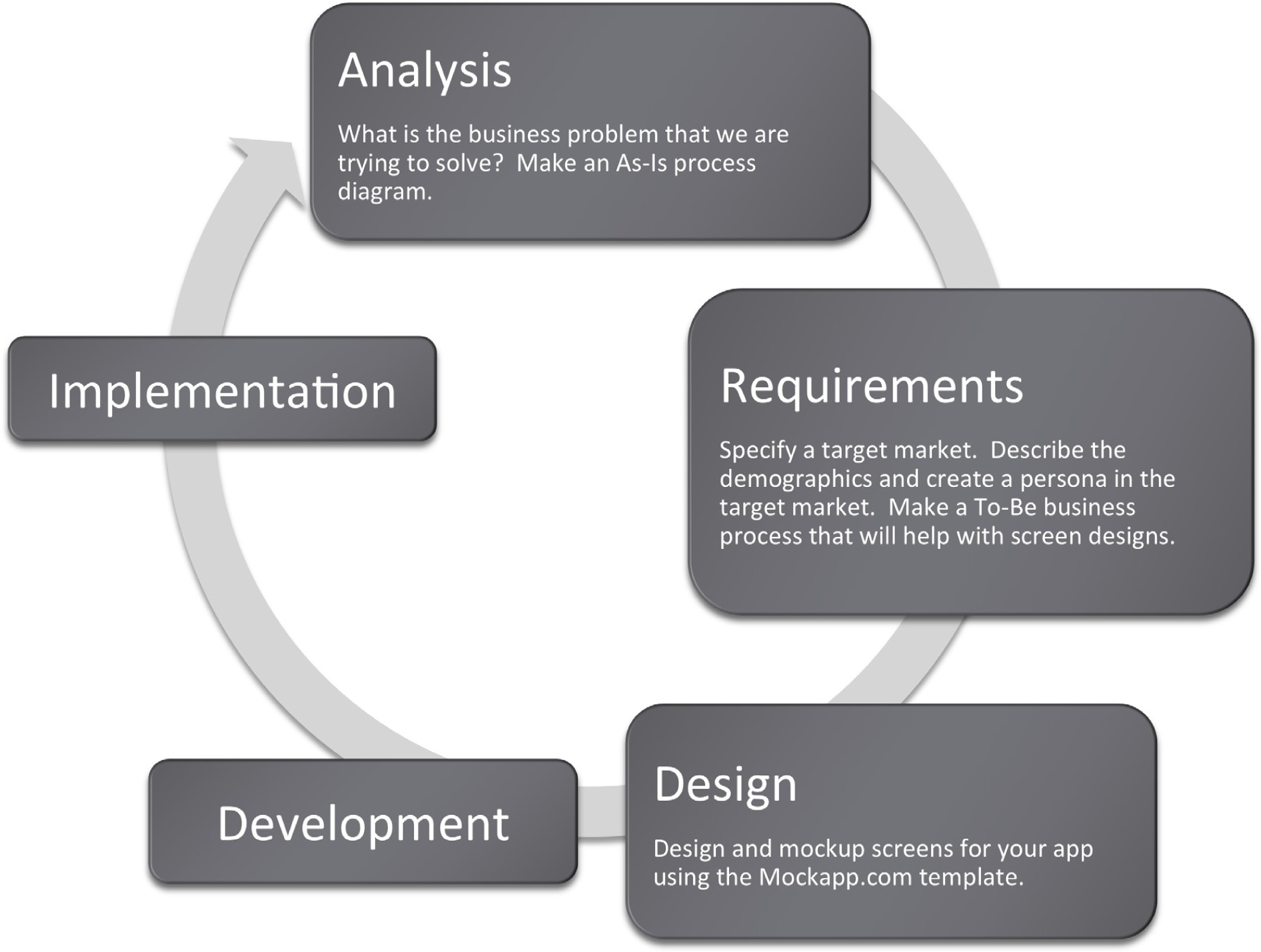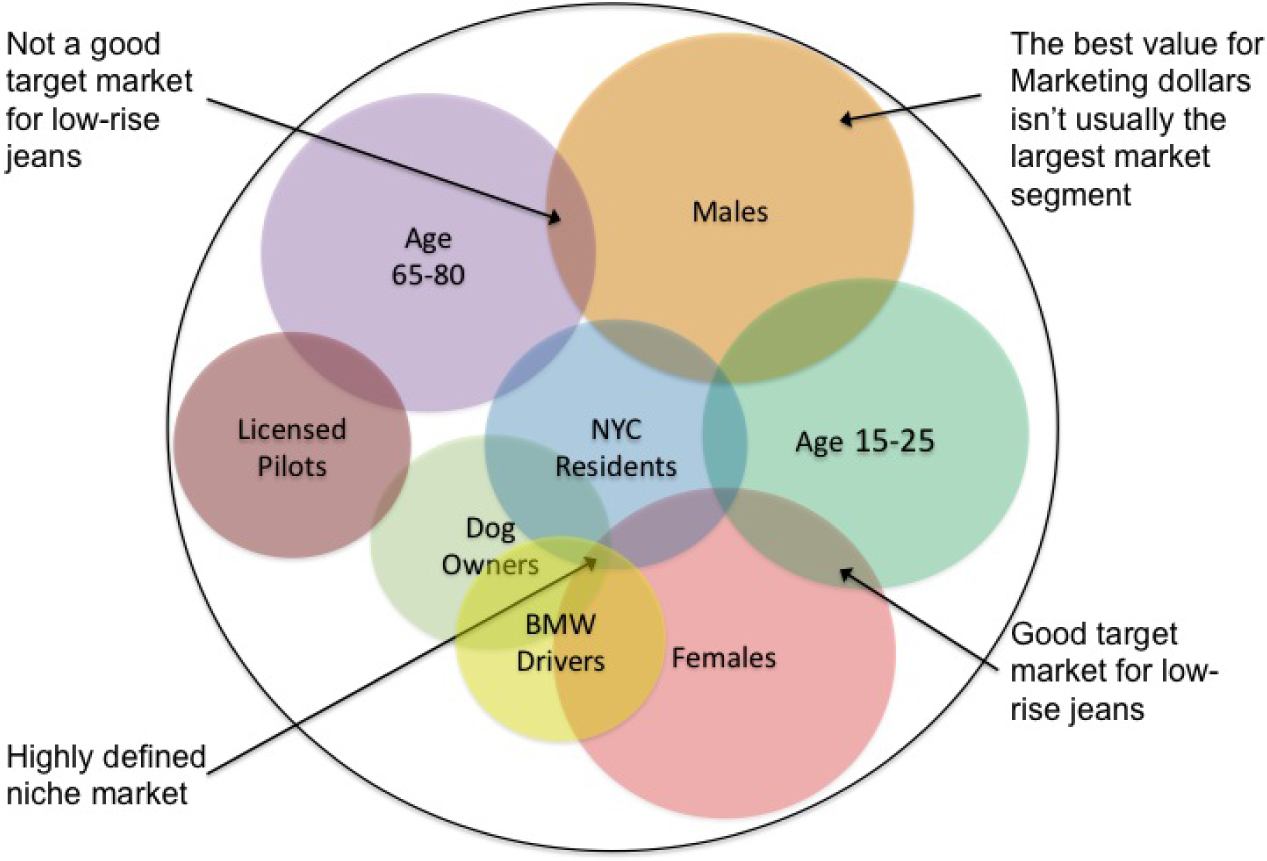MIS is infused into all the other business disciplines. Marketing is no exception. The relationship is even more pronounced when the item being marketed is itself an MIS product—such as an iPhone app.
In this chapter you will design an iPhone app and create a photo realistic mockup of the app. To do this you need to apply both MIS and marketing skills. Marketing skills help to establish the need for the app—is it something that will sell? MIS skills help to craft the product in order to meet those needs.
At some point in their lives many students dream of starting their own business. The iPhone has given hope to millions of entrepreneurs to do just that by creating and selling an app. You will have the opportunity to envision your own appAn application or app is a computer program that runs on the iPhone. The term is also used for programs running on other platforms such as the iPad, Android phone, or indeed any computer. The iTunes store categorizes apps as follows: Books • Business • Education • Entertainment • Finance • Games • Healthcare & Fitness • Lifestyle • Medical • Music • Navigation • News • Photography • Productivity • Reference • Social Networking • Sports • Travel • Utilities • Weather and make a mockup of that app in PowerPoint or KeyNote.
Every MIS product, including an iPhone app, should be designed with a specific group of people in mind. These groups, called market segments, are normally described demographically using characteristics such as age, income, location, gender, and so forth. When a company identifies a market segment upon which it will focus its efforts, that becomes the target market.
For this class, your target market is your classmates. To make it even more real we ask that you develop a fictional persona in the target market. You design the app for that persona. You need to develop a brand position that will distinguish your app from the competition.
An app should improve a process through higher efficiency or effectiveness. Taking a detailed look at a current process diagram will help you identify where and how a process can be improved and enable you to design an enhanced future process. Through understanding the app’s market segmentation and analyzing the process, a popular app can be put on the market.
Many information systems projects are conceived of in a life cycle that progresses in stages from analysis to implementation. The diagram below shows the stages that we touch in the current chapter:

Marketers identify groups of potential customers for a company’s product. This process is called market segmentation. Markets can be segmented based on a variety of demographicsA way to categorize groups of people using age, income level, gender, education level, home ownership, and so forth., or characteristics of the population. Examples include age, income level, gender, hobbies, or interests. Each group is called a market segmentA group of potential customers for a product or service. Segments are typically identified by demographics..
Marketing dollars are best spent targeting the segments most likely to buy the product. It would be unwise to waste money on promotional campaignsThe marketing communication that is aimed at the target market. This includes ads, news releases, and so forth. Marketers must try to accurately predict what type of campaign will appeal to the target market while staying consistent with the brand. aimed at audiences not interested in a particular product. For example, a good marketer would not tailor an ad campaign for low-rise jeans to 50-year-old men. Part of the marketer’s job is to persuade the members of the target marketThe segment that is chosen or targeted by the company. Promotional campaigns are aimed at the target market. that they need the product.
Abercrombie & Fitch has little difficulty convincing 14 to 24-year-olds that they need A&F branded merchandise. However, it would be much harder to sell this merchandise to an older age segment. A good marketer knows not to target everyone for a certain product. Instead, they target only those segments most likely to be interested. The challenge for marketers is to find a way to appeal to each target segment. For A&F, a large part of their appeal is sex — a theme of great interest to its target market. However, universities recruiting students in the same age group would most likely not use sex as an appeal in their advertising. Universities do not use sex appeal because although students are their customers, it is likely that their parents will have veto power over the final decision in college selection. Therefore, a marketer’s job becomes more difficult when there are multiple decision makers, each with different needs and wants.
One common marketing mistake, known as the majority fallacyThe targeting of only the largest segment or group of segments, when a smaller loyal segment could be more profitable., is to exclusively pursue those segments that make up the majority of the market. Marketers most likely do this because the competition is also pursuing those segments. It may be wiser to go after a smaller segment, or a niche, that is under served by the competition. Concentrating on a small, highly defined segment is called niche marketingA narrow and highly defined target market. For example, a niche market might be 21 year old females who drive red economy cars and drink diet Coke.. This type of marketing can be very profitable.
The power of a brandNarrowly defining a product or service so that it provokes a single positive image in the mind of the consumer—such as “cool” for Apple Computer. is proportional to its focus. A brand should not try to target everyone. Instead, a brand should narrowly define a product and all of its benefits. Mention of a brand should conjure a single word in the consumer’s imagination, such as “sporty” (Mini Cooper), “safety” (Volvo), or “luxury” (Lexus).
Table 4.1 Apps
| App Name | Price |
|---|---|
| Wheels on the Bus | $0.99 |
| Becker’s 2010 CPA Mobile Flash Cards | $299.99 |
| Dress Up and Makeup | $1.99 |
| Star Chart | $2.99 |
| Kids Song Machine | $1.99 |
| iHomework | $1.99 |
| SkyVoyager | $14.99 |
| Baby Pregnancy Tracker | $2.99 |
These are all apps listed in the education category at the iTunes store. The apps target different market segments. What market segment does each app target? Would it be a good or a bad idea to go after multiple segments?

Demographic variables tend to overlap. The market segments are defined at the points of overlap. A niche market is defined where multiple variables overlap.
The MIS methodology best suited to designing for a target market is user centered designChanging the design to fit the user rather than asking the user to accommodate the design.. According to Wikipedia, “The chief difference from other product design philosophies is that user-centered design tries to optimize the product around how users can, want, or need to use the product, rather than forcing the users to change their behavior to accommodate the product.”
In a later chapter we will look at some heuristic rules of usabilityHow easy a product is to use.—how easy something is to navigate and use—especially as applied to websites. However, in this chapter we are envisioning the overall user experience (UX)“A person’s perceptions and responses that result from the use or anticipated use of a product, system or service” ISO 9241-210. What would a person in our target market actually want the app to do? How would they want it to behave? Can we make using the app a natural and pleasant experience?
Designers have found that it is a lot easier to answer these questions if you first envision a user in the target market. This fictional user is called a personaA fictional person from the target market created by the designer to help influence design choices.. Once a persona, say Fred, is created then designers can debate what Fred would like based on agreed upon characteristics of Fred. Of course Fred is no substitute for testing an app with real users, but he does help get you off the ground and moving in the right direction.

Create a persona. Fred age 27, earns $60K and just recently moved to the East Side of Cleveland. Fred lives in a 1 bedroom apartment with his dog, Ajax. On weekends Fred likes to mountain bike with his dog and hang out with his fiancée, Mary.
This biking trail app will enable Fred to identify areas to go mountain biking, and because it is ‘animal friendly’, it can also show him maps of areas he can ride with Ajax off leash and the location of areas where they can both stop to rest and get some water.
Test the power of a persona. Which of the restaurant ads below would appeal to Fred?
